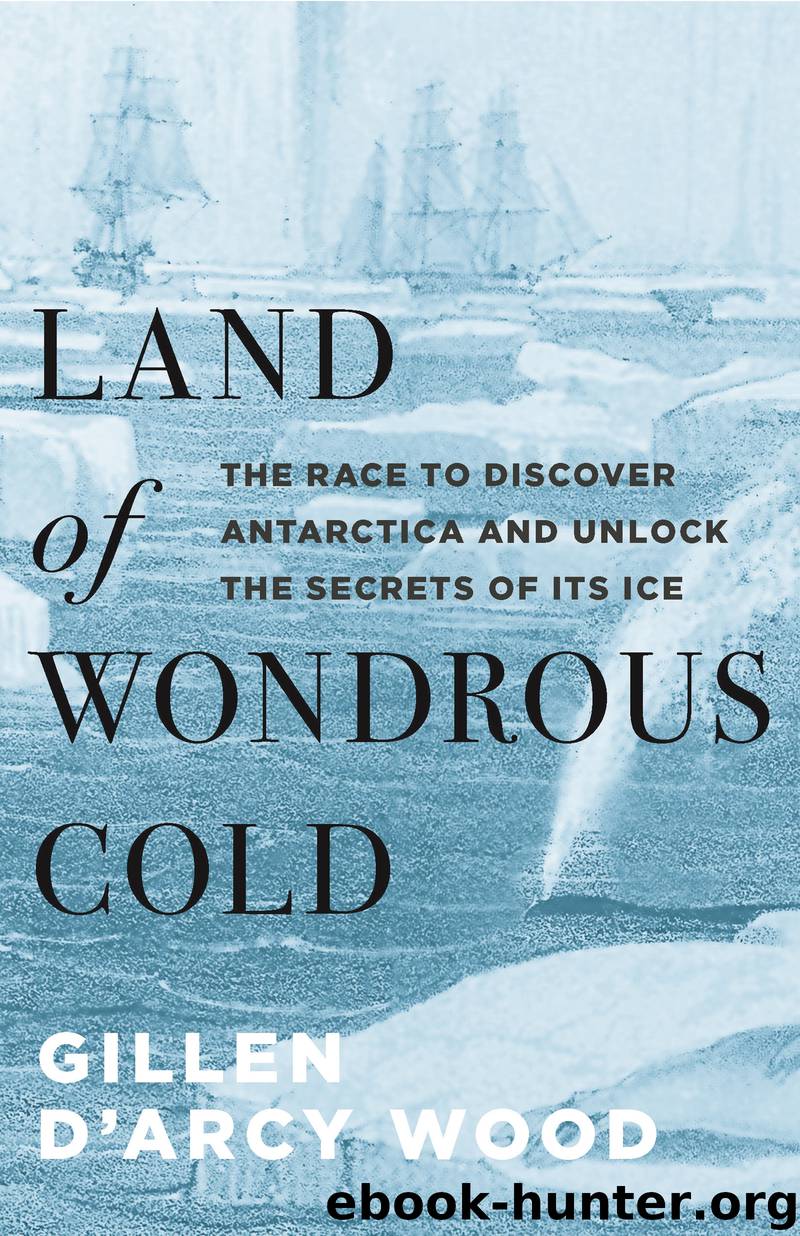Land of Wondrous Cold by Gillen D'Arcy Wood

Author:Gillen D'Arcy Wood
Language: eng
Format: epub
Publisher: Princeton University Press
Published: 2019-12-19T00:00:00+00:00
Interlude: The Antarctic Convergence
Jim Kennett, a central figure in the early history of paleoceanography, was the same age as Joseph Hooker when he first saw Antarctica. And, like Hooker, his destiny as a scientist led him to the Antarctic Convergence and the study of diatoms—to uncover extraordinary secrets of Earth’s and Antarctica’s glacial history. A precocious geology senior from Victoria University in Wellington, New Zealand, Kennett was offered an unusual study abroad opportunity in the spring of 1962: an expedition to the Darwin Glacier in the Transantarctic Mountains, which had never been mapped, where no human beings had, in fact, ever been.
The geologists flew into Scott Base, on McMurdo Sound, in December, the beginning of the summer research season, then south to an area named Brown Hills, adjacent to the Darwin Mountains. To the northwest lay the famous Dry Valleys, a Mars-like terrain containing the oldest exposed rock on Earth. In the Dry Valleys, it had barely snowed in a million years. Brown Hills attracted the team from Victoria University for that reason: bare rocks are a precious commodity in Antarctica.
They arrived with ambitions to map the area by traversing the Darwin Glacier on foot, man-sledding their stores in the heroic style of Scott and Shackleton a half century before. But once on the ice, they instantly gave up this notion. Even this single Antarctic glacier was ridiculously vast, far beyond the capabilities of a party of undergraduates and their professors. So they called in air support. From ten thousand feet, Jim Kennett gazed down at the ice sheet, a great white plateau to which there was no horizon. Though he did not realize it in the moment, his career path as a scientist stretched out before him. There could be no greater physical phenomenon on Earth than this continental ice fortress. It must have shaped the world. Why was it so little studied? Thereafter, Kennett viewed everything he saw through the glaring lens of Antarctic ice.
The richest universities and research institutions in the world are located in Europe and North America. From their northern hemispheric locales, the paleoclimatologists of the mid-twentieth century focused their attention on the Arctic ice ages, when northern ice sheets had spread as far south as England, Germany, and the American Midwest before retreating to their current redoubts in Greenland and the Canadian tundra. The ice age cycle had begun two to three million years ago when, it was assumed, Antarctica had also iced over. Bi-polar cooling had been coincident because there was no reason to believe otherwise.
Enter Jim Kennett, a son of the Southern Hemisphere, to overthrow this complacent assumption. For his doctoral thesis, written at the age of twenty-four, Kennett studied fossilized mollusks across the North Island of New Zealand. These mollusks allowed him to travel even further back in time than the Pleistocene ice ages, back to the Late Miocene epoch, fifteen million years ago and older. The character of these mollusks, and their deposition, indicated that New Zealand had witnessed major episodes of sea-level fluctuation.
Download
This site does not store any files on its server. We only index and link to content provided by other sites. Please contact the content providers to delete copyright contents if any and email us, we'll remove relevant links or contents immediately.
Man-made Catastrophes and Risk Information Concealment by Dmitry Chernov & Didier Sornette(4728)
The Revenge of Geography: What the Map Tells Us About Coming Conflicts and the Battle Against Fate by Kaplan Robert D(3596)
Zero Waste Home by Bea Johnson(3285)
COSMOS by Carl Sagan(2944)
In a Sunburned Country by Bill Bryson(2941)
Good by S. Walden(2909)
The Fate of Rome: Climate, Disease, and the End of an Empire (The Princeton History of the Ancient World) by Kyle Harper(2429)
Camino Island by John Grisham(2379)
A Wilder Time by William E. Glassley(2358)
Organic Mushroom Farming and Mycoremediation by Tradd Cotter(2304)
Human Dynamics Research in Smart and Connected Communities by Shih-Lung Shaw & Daniel Sui(2173)
The Ogre by Doug Scott(2105)
Energy Myths and Realities by Vaclav Smil(2053)
The Traveler's Gift by Andy Andrews(2007)
Inside the Middle East by Avi Melamed(1937)
Birds of New Guinea by Pratt Thane K.; Beehler Bruce M.; Anderton John C(1904)
Ultimate Navigation Manual by Lyle Brotherton(1763)
A History of Warfare by John Keegan(1711)
And the Band Played On by Randy Shilts(1612)
